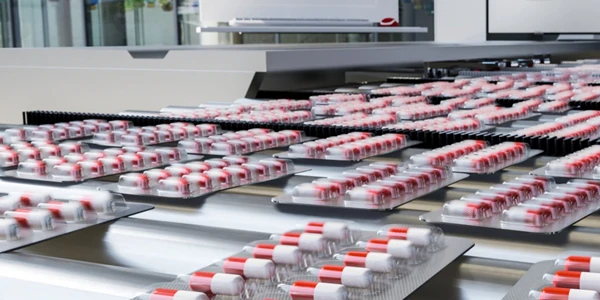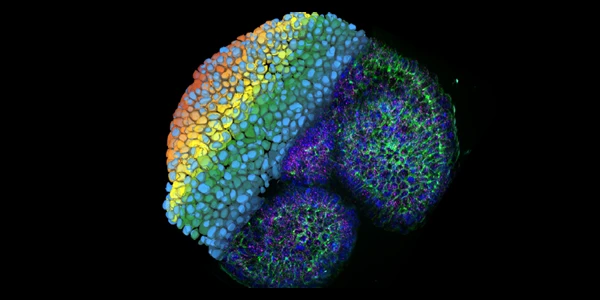Current Challenges and Emerging Solutions in Proteomics, Metabolomics, and Biopharma

Proteomics
The large-scale study of proteins, their structures, modifications, and interactions continue to stand at the forefront of biological and biomedical discovery. By providing the critical link between genotype and phenotype, proteomics offers unparalleled insight into how biological systems function. Yet despite decades of innovation and rapid progress, the field still faces several enduring challenges that hinder its full potential. These include:
1. Sample Complexity & Dynamic Range
One of the foundational challenges in proteomics arises from the complexity and dynamic range of the proteome in biological samples (cells, tissues, plasma, etc.).
2. Sensitivity, Missing Values & Reproducibility
Related to sample complexity is the issue of sensitivity and missing data—especially in quantitative workflows.
3. Post-Translational Modifications, Isoforms & Proteoforms
While identifying which proteins are present is already challenging, understanding which form of the protein (with PTMs, isoforms, truncations, proteolytic forms) is even more so.
Emerging Solutions
The proteomics community continues to make steady progress toward addressing these limitations.
- Next-generation mass spectrometers now deliver faster scan rates, improved sensitivity, and higher resolution.
- Data-independent acquisition (DIA) methods mitigate missing values and enhance reproducibility across runs.
- Automated sample preparation and microfluidic platforms minimize sample loss and streamline workflows.
- Artificial intelligence and machine learning are being applied to peptide identification, quantification, and data harmonization.
Metabolomics
The global analysis of small-molecule metabolites in cells, tissues, or biofluids offers a unique window into biochemical phenotypes. Metabolites reflect the integrated function of upstream genomic, transcriptomic, proteomic, and environmental influences, making metabolomics a powerful complement to other “omics” layers. Yet despite its promise, the field still grapples with a host of technical, analytical, and interpretative challenges. Some of the main obstacles that current metabolomics studies often confront include:
1. Pre-Analytical Challenges
The metabolome is highly dynamic and sensitive to environmental factors. Sample collection, handling, and biological heterogeneity continue to challenge the accuracy and dynamic range of metabolites.
2. Analytical / Instrumental Challenges
The metabolome spans a vast chemical space and to approach broad coverage, metabolomics pipelines often need to combine multiple platforms, each with its own strengths, weaknesses, and sample prep requirements.
3. Computational, Informatics & Statistical Challenges
Raw LC-MS datasets yield thousands to tens of thousands of features (peak groups). Extracting, aligning, integrating, and normalizing them across samples is a complex and error-prone process.
Opportunities & Emerging Solutions
Despite the challenges, the metabolomics field is actively pursuing solutions and innovations:
- Better standardization & reference materials: Efforts (e.g. Metabolomics Standards Initiative) aim to harmonize reporting, quality control, and metadata standards.
- Improved spectral libraries & databases: expanding libraries with more reference compounds, collision energies, adducts, and retention time data helps boost annotation confidence.
- Advanced computational methods: machine learning and probabilistic models for annotation, imputation, integration, and pathway associations.
Biopharma
Mass spectrometry in biopharma has never been more capable—or more complex. The core challenges are not only instrumental: they live at the interfaces between structural details, informatics, validation, and quality systems.
1. Complex Proteins: mAbs, ADCs, and Proteofoms
Modern pipelines are rich in complex modalities—monoclonal antibodies (mAbs), bispecifics, fusion proteins, and antibody–drug conjugates (ADCs). Each brings heterogeneous attributes (glycoforms, charge variants, clip sites, higher-order structure) that stretch MS methods.
2. Quantification: relative vs. absolute in complex matrices
Absolute quantification of biologics by MS (e.g., surrogate peptide quant) is complicated by matrix effects, proteolysis efficiency, and isotope-labeled standard availability—especially for large or highly modified proteins.
3. Reproducibility and comparability
Even small changes in sample prep (denaturation, reduction/alkylation, protease choice), LC (columns, RT drift), or instrument tuning can shift PQA abundance or variant detection.
Emerging Solutions & Future Directions
Near-term advances to watch include:
- Native/top-down at scale. Better fragmentation strategies (e.g., internal fragment assignment, electron-based methods) and improved deconvolution are expanding actionable structural readouts for mAbs/ADCs.
- Routine native MS in discovery and comparability. Growing evidence and workflows are pushing native MS toward more standardized use in decision-making.
- HDX-MS standardization. Community best practices and metrology efforts (e.g., NIST) are reducing variability and smoothing regulatory conversations around higher-order structure claims.
Summary
Proteomics has entered an exciting yet challenging phase. Despite transformative technological advancements, key hurdles—ranging from sample complexity and data completeness to computational standardization and clinical translation—continue to limit its reach.
Metabolomics stands at a pivotal juncture. Its strength is its capacity to capture the phenotypic readout of biochemical networks, but that very strength brings formidable complexity. From sensitive preprocessing and broad chemical diversity to uncertain annotations, computational burdens, and translational hurdles, the challenges are many and interdependent.
Biopharma MS has never been more capable or more complex. The core challenges are not only instrumental: they live at the interfaces between structural, informatics, validation, and quality systems. Teams that pair layered MS strategies with reference materials, governed MAM, and fit-for-purpose validation will translate exquisite structural insight into robust control strategies and move novel biologics through development and onto the market with confidence.
Innovations in instrumentation, computation, standardization, and integrative biology are steadily chipping away at the barriers. As these advances mature, the fields of proteomics, metabolomics, and biopharma may realize their full potential as central pillars in precision medicine, systems biology, and biomarker discovery.










